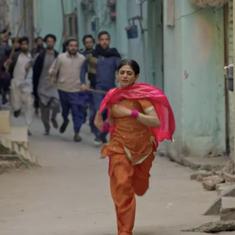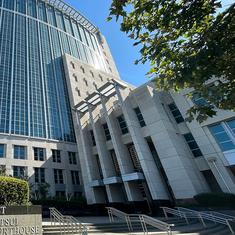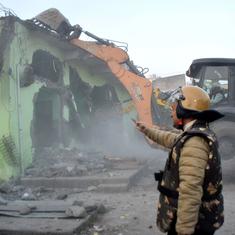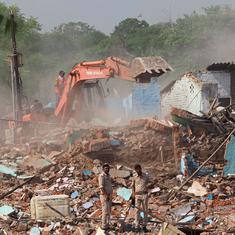Toxicology levels at Mumbai’s Deonar dumping ground four times permissible limit: Report
This comes against the backdrop of plans to relocate residents of Dharavi, who will be displaced due to the slum redevelopment project, to the site.

The levels of toxicology indicators at the Deonar dumping ground in Mumbai are up to four times the permissible limits prescribed by the Central Pollution Control Board, a study commissioned by the Brihanmumbai Municipal Corporation has shown, The Indian Express reported on Sunday.
The study comes against the backdrop of plans to relocate residents of Dharavi, who will be displaced due to the slum redevelopment project, to the dumping ground site after clearing it.
The 326-acre landfill in the city’s eastern suburbs is India’s largest and oldest dumping ground, with the garbage mounting up to 35 to 40 metres, as high as a 12-storey building. It holds nearly 1.85 crore metric tonnes of legacy, or aged and accumulated, waste.
Several reports have pointed out that settlements around the dumping ground are exposed to mercury and toxic gases.
The waste characterisation study commissioned by the municipal corporation analysed the levels of Biochemical Oxygen Demand, Chemical Oxygen Demand and Total Dissolved Solids in the waste and leachate, or liquid leaching out of the waste piles, at Deonar, The Indian Express reported.
Biochemical Oxygen Demand is the amount of oxygen that microorganisms require to decompose the organic matter under aerobic conditions, while Chemical Oxygen Demand is the total amount of oxygen required to break down the organic matter by chemical oxidation.
The Total Dissolved Solids refers to the measure of all inorganic and organic materials dissolved in water.
All three are key indicators of environmental toxicology. Higher levels indicate increased toxins.
According to the study, the average Biochemical Oxygen Demand in the leachate was 390 milligrams per litre, according to The Indian Express. The permissible limit of this indicator is 100 milligrams per litre (land) and 30 milligrams per litre (water).
Additionally, the average Chemical Oxygen Demand was 1,002 milligrams per litre, with the permissible limit being 250 milligrams per litre (water), the study noted.
It added that the average Total Dissolved Solids level was 6,550 milligrams per litre. The permissible limit was 2,100 milligrams per litre.
The report also noted that “inert waste”, including construction debris and non-biodegradable material, comprised 30-50% of the waste, according to The Indian Express.
“This type of waste poses challenges for disposal and management due to its… low degradation rate,” the newspaper quoted the study as having said.
The study was commissioned by the Brihanmumbai Municipal Corporation in 2023 and conducted by NETEL India Limited, in a joint venture with NM Consultants-SKW Soil and Surveys, The Indian Express reported.
The report was made public in May after the municipal corporation floated a Rs 2,368 crore tender to clean up the site by a process of bioremediation, a natural or accelerated process that uses biological organisms to clean up environmental contamination, within three years.
Kiran Dighavkar, Deputy Municipal Commissioner (Solid Waste Management), told The Indian Express that the tender document has mentioned that the methodology of processing the legacy waste, including the leachate, should be ideated by the contractor who will be awarded the contract.
“After the contractor submits the proposal, we [Brihanmumbai Municipal Corporation] will analyse it and, if required, a peer review process will be carried out through a reputed agency,” Dighavkar said. “After we approve the methodology, work will start on the ground.”
He added that the contractor for the work would be finalised by June 23.
The Dharavi slum redevelopment project is being carried out through a special purpose vehicle, in which the Adani Group holds an 80% stake and the state government holds the remaining 20%.
Along with the rehabilitation of slum residents, it involves redeveloping buildings and informal tenements as well as developing infrastructure such as water supply and sewage in Dharavi, considered to be among the world’s largest slums.
Until the Dharavi redevelopment is complete – a process that could take decades – the Maharashtra government has decided to relocate residents to various neighbourhoods across Mumbai.
A large section of residents, those who have been declared “ineligible” to receive new homes in Dharavi, will be permanently shifted to the dumping ground in Deonar, which is 12 km away.
Ineligible residents are those who either live on upper floors in Dharavi’s shanties or built their tenements after 2000.
Also read: It’s not just Dharavi. For years, Mumbai’s poor have been banished to a life near a garbage dump









